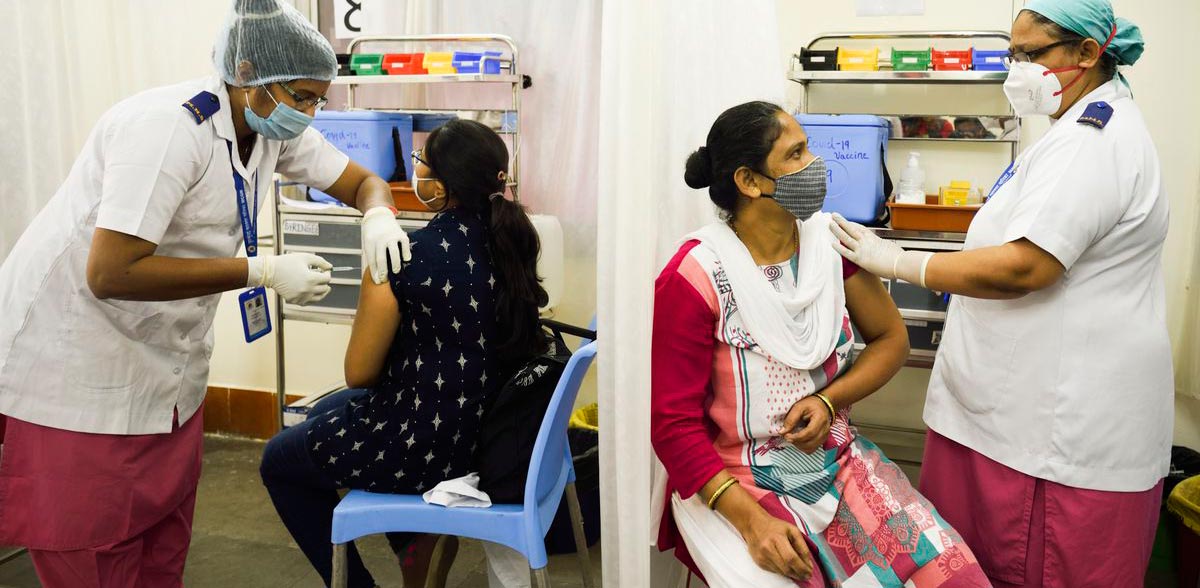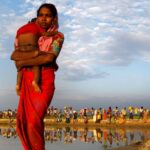Coronavirus disease 2019, also known as COVID-19, is an infectious disease caused by the SARS-CoV-2 virus. The first known case was discovered in December 2019 in Wuhan, China. Since then, the disease has spread globally, resulting in a pandemic. Precautionary methods like as physical or social distance, quarantining, masking coughs and sneezes, hand washing, and keeping dirty hands away from the face were and continue to be used. In public places, the use of face masks or covers has been suggested to reduce the risk of spread.
Since the beginning of the COVID-19 epidemic, WHO has been working with countries on public health measures to reduce the transmission of virus. WHO suggested that in each country, early immunization should target populations at greatest risk of infection, including as health professionals, the elderly, and people with serious health concerns. Then, when COVID-19 vaccines become more widely available, governments will be able to vaccinate additional priority populations as well as the wider public.
On January 16, 2021, India began providing COVID-19 vaccinations. India had delivered approximately 738 million doses total, including first and second doses of presently authorised vaccinations, as of September 11, 2021. But have we considered the gendered lens in order to have a better picture of how both males and females are approaching this crucial vaccination drive? The goal of this survey is to learn about the COVID-19 vaccine and the psyche that women have about becoming vaccinated. Because of the geographical closeness and socioeconomic diversity of the persons studied, it is impossible to generalize findings to other populations; nonetheless, the data presented here may be useful to those attempting to understand COVID-19 immunization and women’s involvement.
In India, the gender gap has always been unbalanced, with men surpassing women in major health indicators, literacy rates, and employment statistics. As India embarks on its largest Covid-19 immunisation programme to yet, this discrepancy is expected to increase. According to CoWin dashboard statistics, almost 57 crore vaccines have been distributed as of 19 August 2021, which is more than the whole population of numerous countries. Despite this, women make up around 46 percent of the total population vaccinated in India. According to the National Family Health Survey-4, more women prefer to leave healthcare choices to their husbands than than make them themselves. Furthermore, it has become a common believe that women who do not go out for work are not at risk of developing Covid. Also on top of that, vaccination clinics are held during the day, when many homemaker women are busy with household chores or caring for their children which is becoming worse for those to get the vaccine. Likewise, those daily wage working women earning between Rs 150 and Rs 230 per day cannot afford to miss a day’s work. Getting two square meals a day is more essential to them than avoiding a disease they haven’t caught yet. To make situation complicated, vaccination sites or mobile camps are frequently located a long distance away from their houses. Because many women rely on their husbands or any other men in their family members for mobility and certainly both of them would be out of work. On the othet hand, vaccine shortages heighten the fear amongst them because there is no certainty of getting a shot, even if one travels long distances and takes a day off. Another barrier is concern over the vaccine’s negative side effects. Many women are concerned about experiencing adverse effects and missing additional work days. Further issue is a lack of digital literacy, which makes it difficult for women to book an appointment at vaccine clinics that require online registration.
In order to understand it better, we conducted an online survey with few unstructured questions related to the topic of research. Total of 7 questions were asked through the only survey. The count of respondents from both men and women seems to be more from women which is 83.3% whereas men count was only 16.7%.
The first question asked was how did Covid-19 affect you in the first two waves? The question had four options and amongst which the option “Family member got infected” was chosen the most followed by the rest. Secondly, the option “Got-infected yet survived through” got the second highest count. The second question asked was “How Covid-19 affected your economic standing?” The question had five options amongst which the participants chose three options from the list which were “Family business suffered, There was salary cut and My reason is not listed here” and all these three options got equal weight-age. The third question asked was “How many of your family members got the first dose of COVID-19 vaccine?” 83% response was that all their family members got the first dose of COVID-19 vaccine. The fourth question asked was “Who is eligible to get the COVID-19 vaccine?” The participants responded “Men and women both who are above 40 years of age” with 56%, then 46% participants responded with “All of the above” which included anyone who is 18 years of age and above. The fifth question was “How many of your family members got the Second dose of COVID-19 vaccine?” 67% of the response was took the Second dose including him or her. This means more than half of the respondents were fully vaccinated and also their families. The sixth question was related to rumours surrounding COVID-19 vaccine heard of. 42% response was that COVID-19 was fatal. Least they heard of was that taking vaccine would lead to complication and also one who got the disease should take the vaccine. The last question was “Did you get both the vaccines till date?” Almost all which is 83% took both the vaccines. Only 4% is not fully vaccinated and 9% said their second dose due is in sometime.
It was observed that almost all of the participants, primarily women, answered all of the questions presented. Women actively engaged in the online survey, however males did not react to every question. The sample revealed that, despite hearing rumours about the COVID-19 immunisation, particularly involving women, both men and women took vaccinations. It might possibly be because the respondents were well-educated and aware of the usefulness of immunizations in lowering COVID-19 positive rates in our country. This study reveals that, while women are receiving vaccinations, but most importantly rural and impoverished women are trailing behind the statistics in terms of immunisation, which should be taken into account when raising awareness among not just rural women, but also men.
Conclusion:
Though it will be very bias to analyze the data with such small sample, but we can definitely say from the above samples that women are seemed to be aware of the vaccination drive happening. From this we can say that the gender gap in COVID-19 vaccination has declined gradually. A report from TOI says that “The gender gap in Covid-19 vaccination has disappeared in 11 Indian states but it is sharp in most others, including the states with higher human development index such as Maharashtra, Delhi and Goa.” In some parts of the country, especially women drives were carried out for COVID-19 vaccination. It can said from the above samples that women have become aware regarding the COVID-19 disease and also taking necessary precautions by getting vaccinated.
However, we should not be highly confident about the significant outcomes. The samples obtained were largely from educated individuals since they were our closest virtual reach and we couldn’t reach and comprehend the viewpoints of those people who come from impoverished backgrounds and can’t afford to get a smartphone because the survey was online. But based on our secondary research, some women, particularly the impoverished and illiterate, continue to oppose vaccination. Most significantly, women must be empowered in order to achieve gender parity. This is true not only for Covid-19 immunization, but also for enhancing other aspects of their healthcare, education, and livelihood. Financial freedom, a shift in mentality, equitable opportunities, and the removal of societal obstacles will all contribute to empowerment.
The effectiveness of the COVID-19 immunization campaign is determined upon the public’s understanding and attitude toward the vaccine. Increasing vaccination acceptability can be achieved by enhancing facilitators and reducing obstacles in the general population. By overcoming the barriers and challenges that can enhance the participants’ transition at vaccination sites, people’s awareness of the COVID-19 vaccine and the immunization programme can be improved.
The necessity of the hour is to increase vaccination coverage for everyone. Despite its extraordinarily low levels of health facilities, India has a strong track record in vaccine development and distribution. However, mass vaccination can only be successful if we consider structural disparities, recognize the unique obstacles they offer, and devise ways to overcome them. If women are left out of the Indian immunization effort, it will fail.
Authors: Archana Priyam Hazarika and Ritika Bhatia





